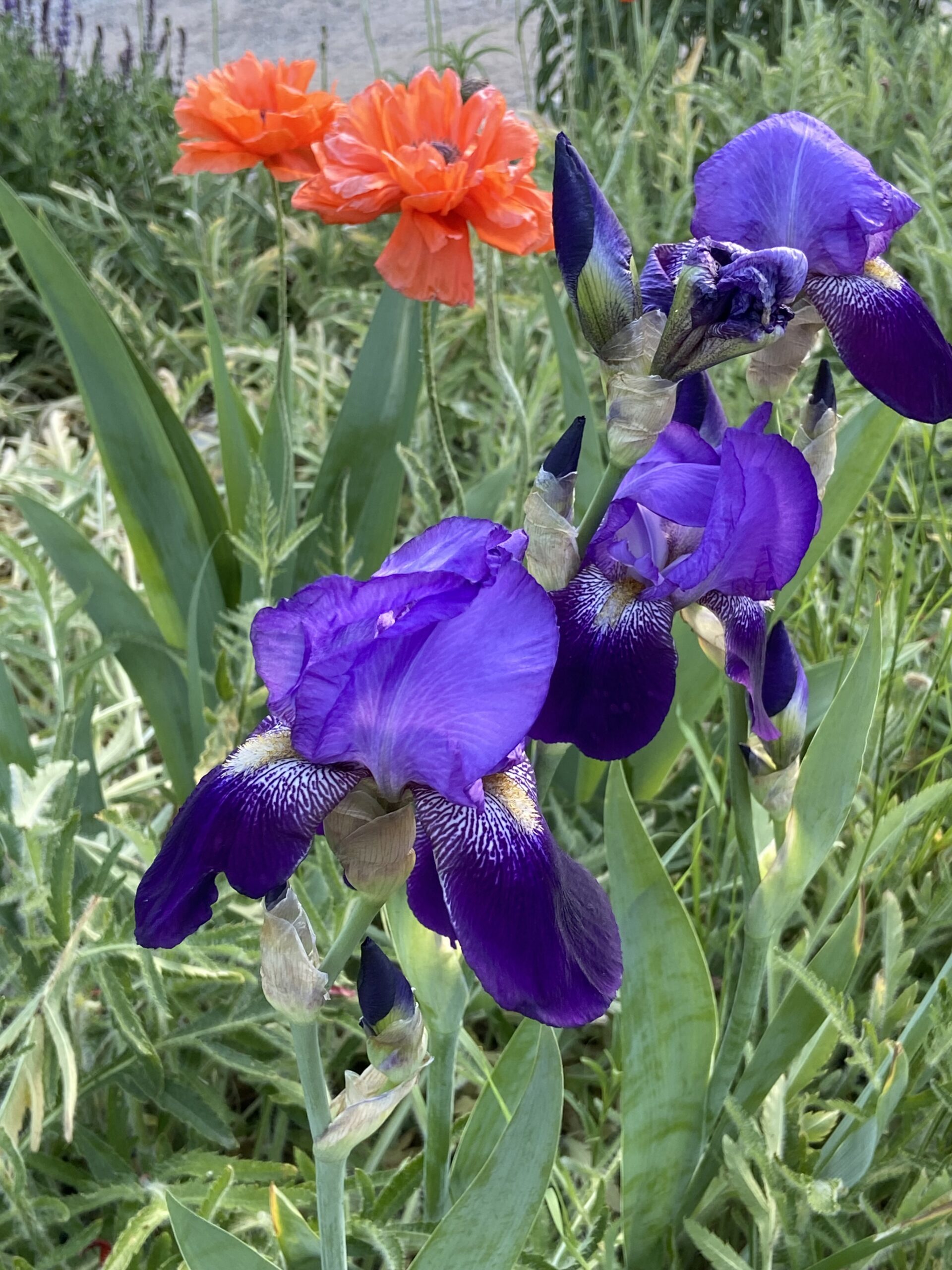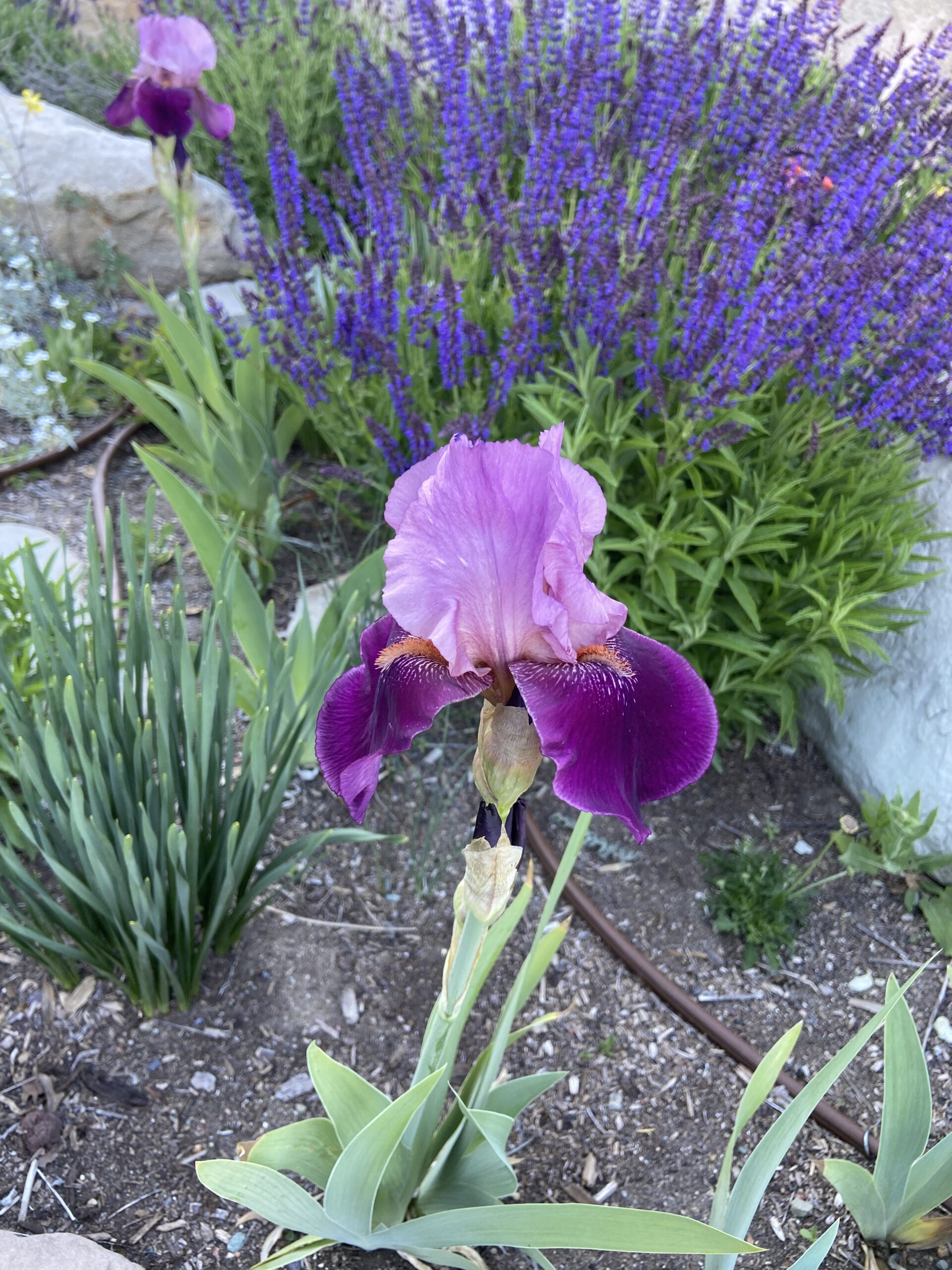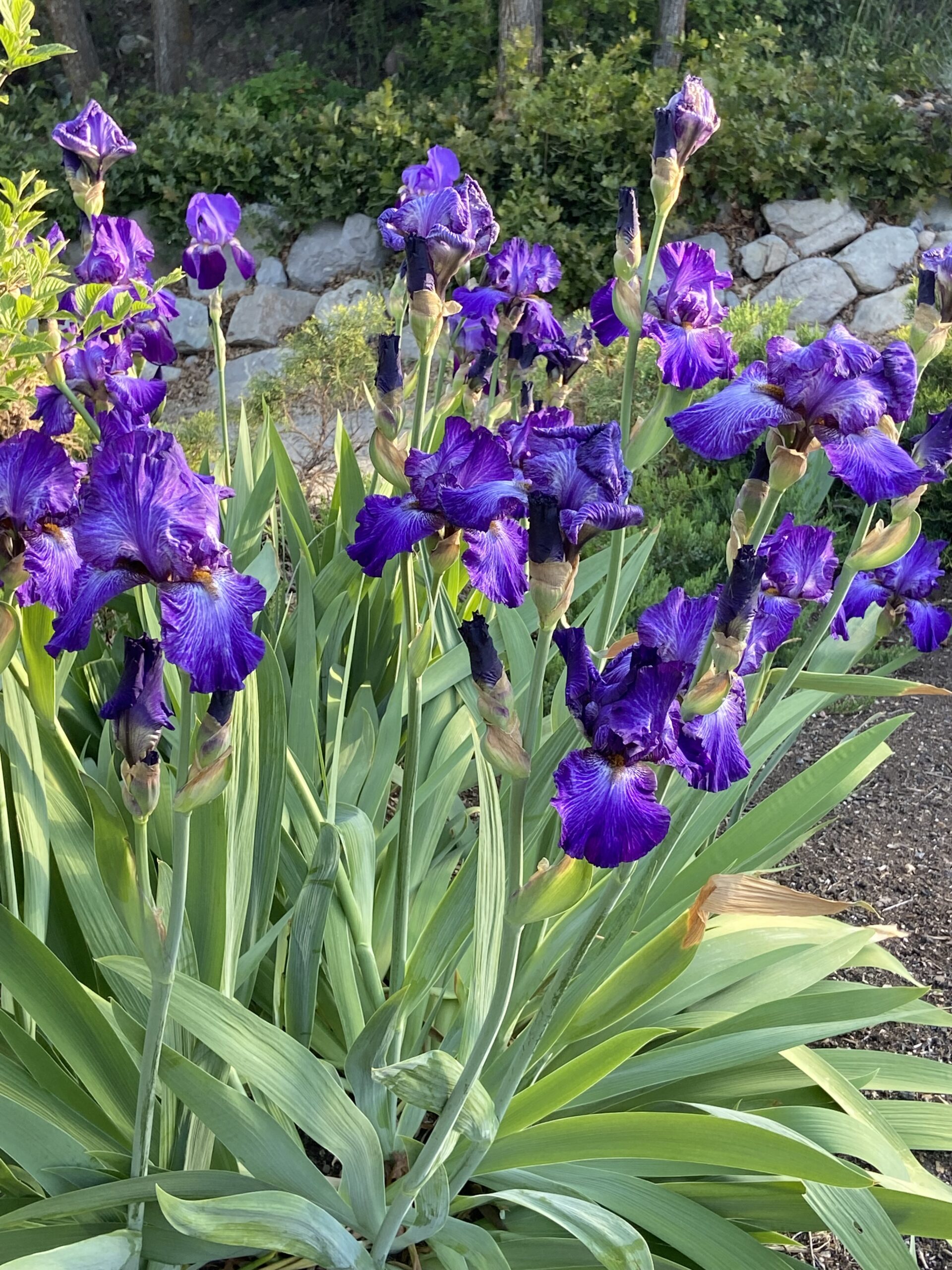




Iris can be grown successfully in Colorado. They come in many forms, shapes, colors and sizes and the sword-like foliage is attractive when the plant is not in bloom. The two most common types of iris grown in Colorado are Bearded (Iris germanica) and Siberian (Iris sibirica) .
What is special about bearded irises?
Bearded iris have a flower with three erect petals, called standards, and three drooping petals, called falls. The falls have a hairy center, hence the name Bearded iris. Bearded iris do best in full sun and dry, alkaline soils which are prevalent in Colorado.
What about the siberian iris?
Siberian iris have more slender leaves than the Bearded iris and have blue, purple and white beardless falls. Culture for Siberian iris is much different than the Bearded iris. Siberian iris grow best in moist soil, full sun and naturalize well near stream beds.
What are some good growing techniques for the iris?
Iris are relatively carefree; however, they should be divided every three to four years. Divide the rhizomes, which are underground stems, after the plants have finished flowering, but no later than August. Discard any segments that are mushy or riddled with holes. Separate healthy rhizomes into segments with one fan of leaves and several feeding roots. Cut the leaves back to six inches. When setting the new plant, spread the roots out in the soil and position the top third of the rhizome above the soil surface. Arrange foliage to face outward away from the center of a group.
For more information, see the following Planttalk Colorado™ video(s).
For more information, see the following Colorado State University Extension fact sheet(s).



